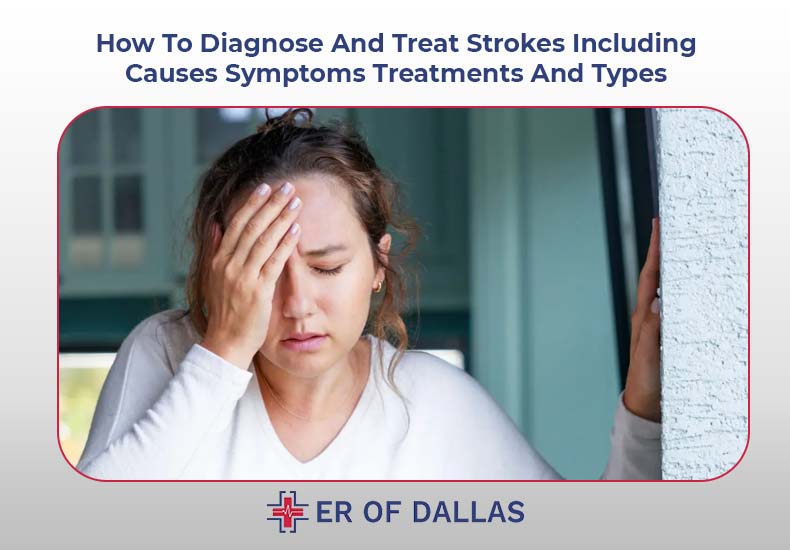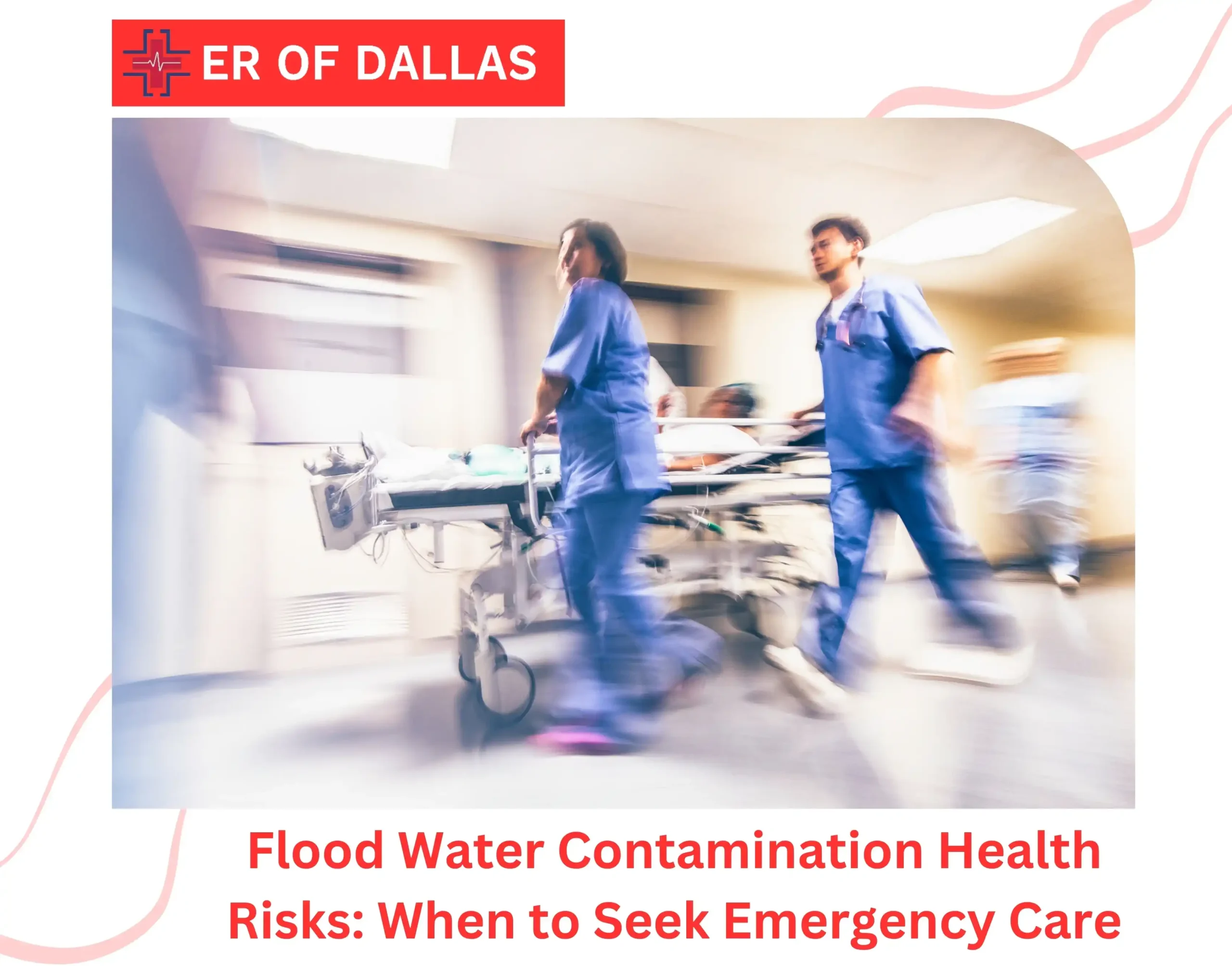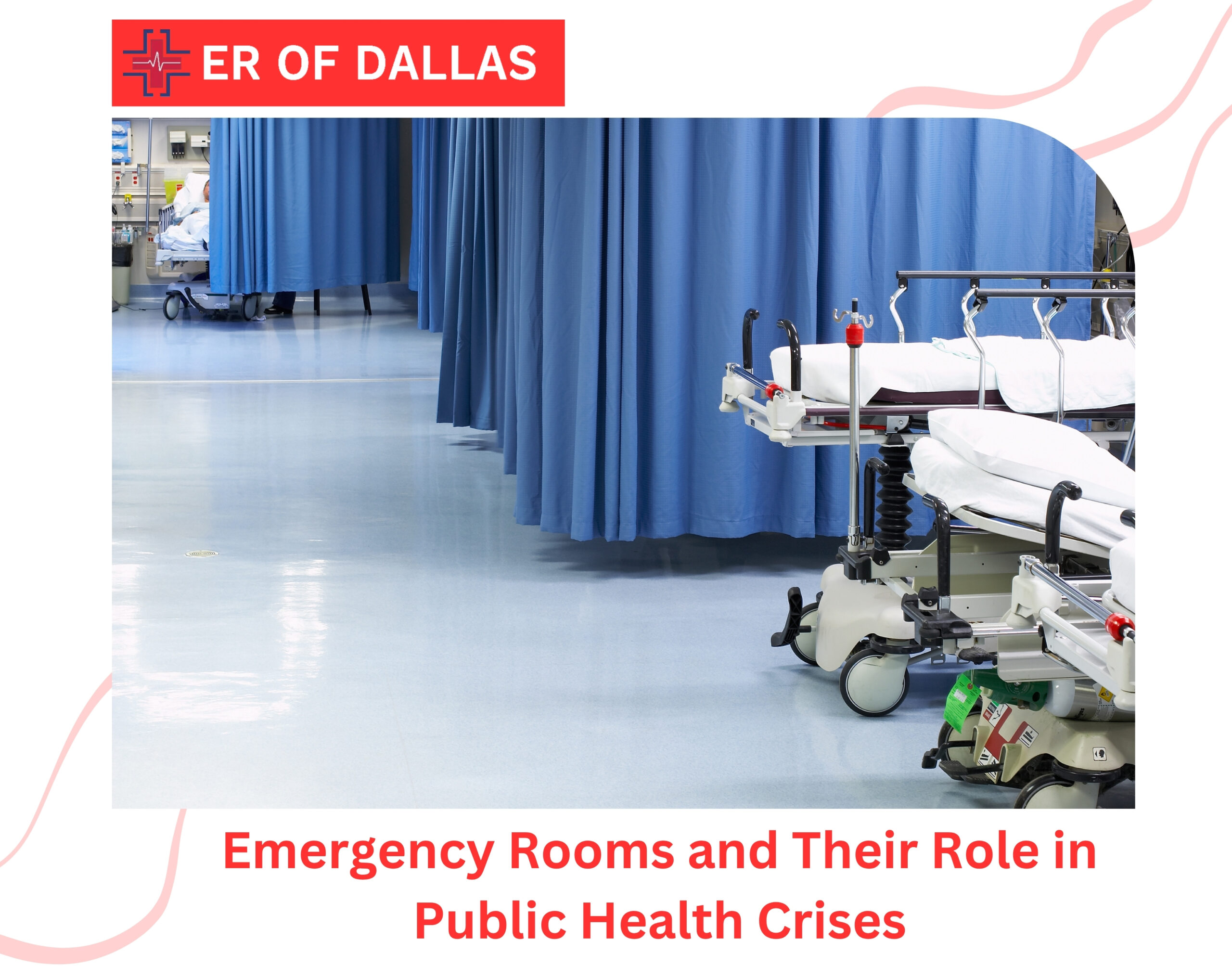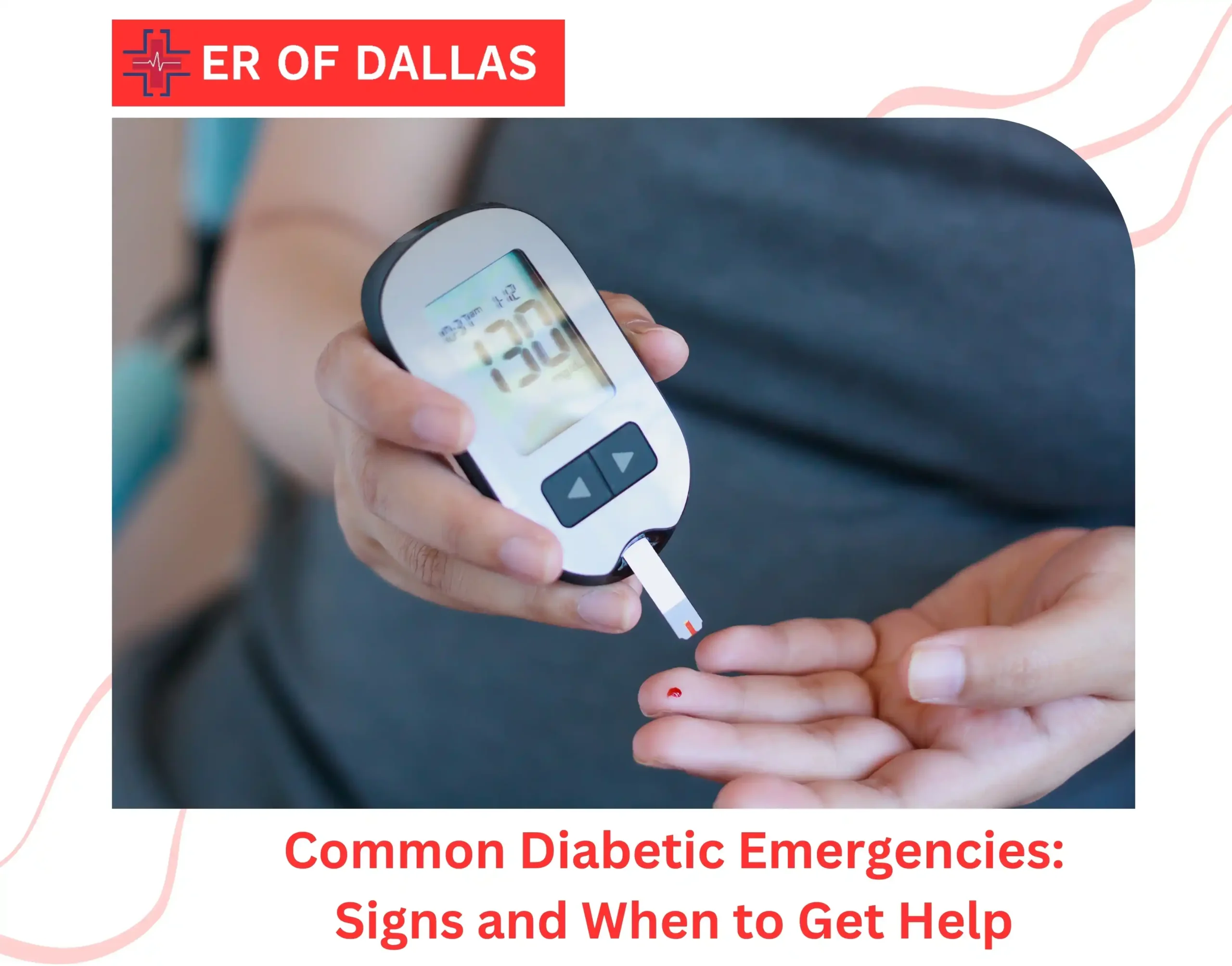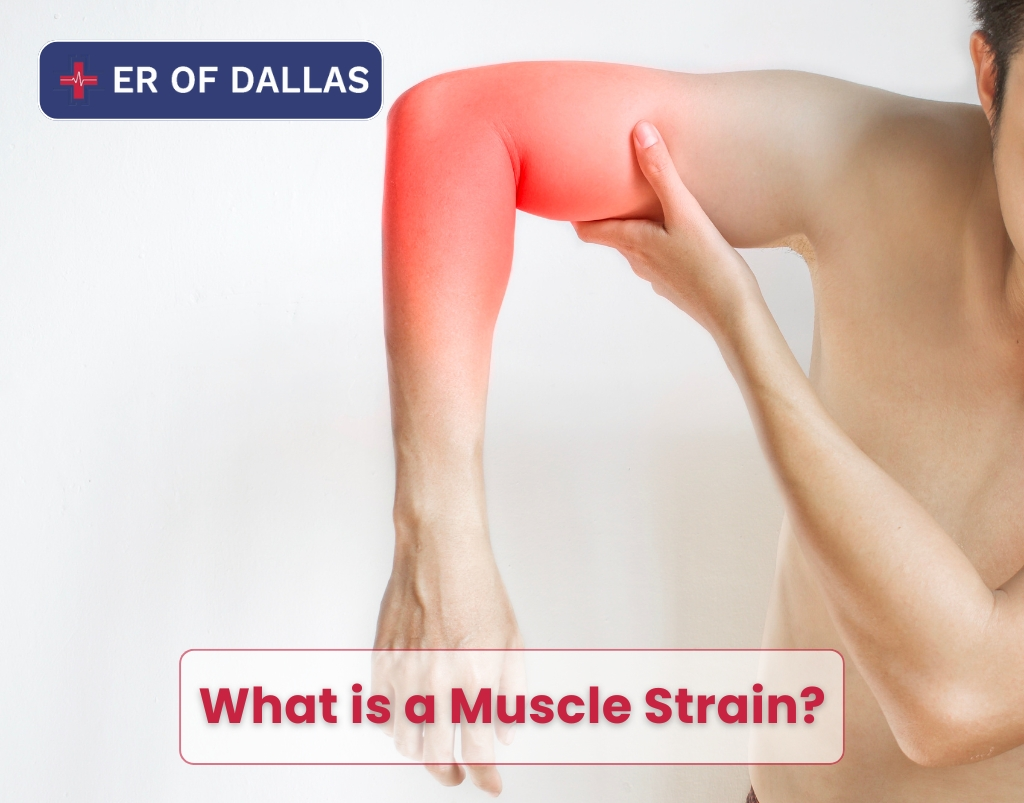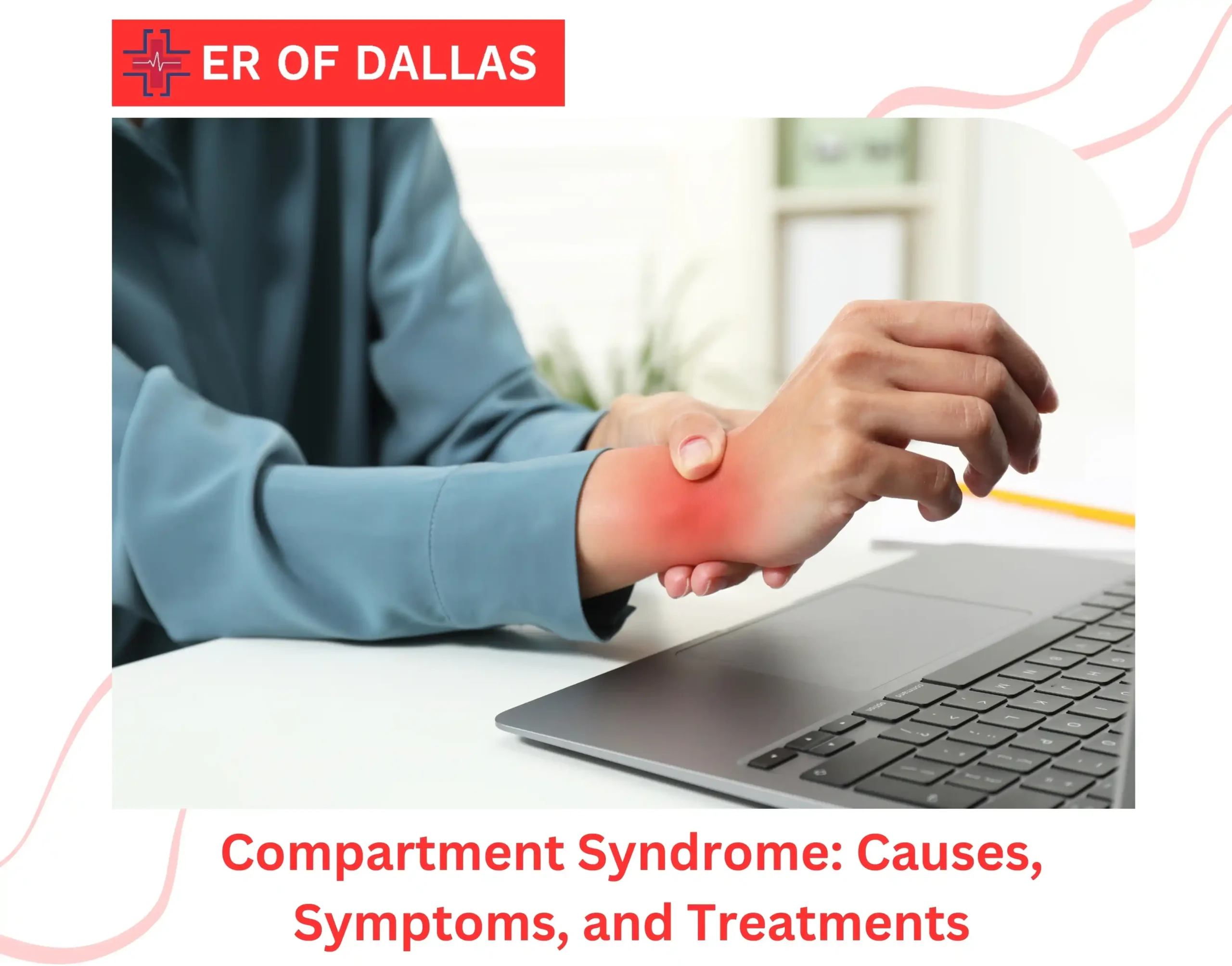What Is A Stroke?
A stroke is a potentially fatal illness that results from insufficient blood flow to a portion of the brain. The most prevalent causes of this are cerebral hemorrhage or clogged arteries. The brain cells there begin to lose oxygen when there isn’t a constant flow of blood.
When a stroke occurs, every second matters as it is a life-threatening emergency. Call 911 (or your local emergency services number) as soon as possible if you or someone you’re with is experiencing stroke symptoms. Your chances of recovering from a stroke without becoming disabled increase with prompt treatment.

It’s important to keep in mind to think BE FAST when trying to spot stroke warning signs:
B. Be aware of sudden balance loss.
E. Watch out for sudden loss of vision in one or both eyes. Do they have double vision?
F. Get the person to smile. If one or both sides of their face droop, they are weak or paralyzed.
A. Stroke sufferer often has muscle weakness on one side. Get them to raise their arms. One arm will stay higher than the other if they have a one-sided weakness (and did not have it before).
S. People suffering from strokes often have difficulty speaking. Speaking might be slurred or difficult.
T. Don’t wait to get assistance, as time is of the essence! Consider looking at a clock or a watch to remember when symptoms started.
Who Is Affected By Stroke?
All ages, including children, are susceptible to stroke, while certain individuals are more vulnerable than others. Strokes are more common in later life (those over 65 account for around two-thirds of all stroke cases).
A person’s risk of stroke can also be increased by several medical disorders, such as hypertension, hyperlipidemia, Type 2 diabetes, and a history of heart attacks, strokes, or abnormal heart rhythms such as atrial fibrillation.
My Body is Affected By A Stroke In What Ways?
What a heart attack is to your heart, a stroke is to your brain. A stroke results in the loss of blood flow to a portion of the brain, depriving it of oxygen. The impacted brain cells become oxygen-starved and malfunction when there is insufficient oxygen.
The oxygen-starved brain cells will eventually perish. A part of the brain can get permanently damaged and you may lose the ability to control it if enough brain cells in that area die. Restoring blood flow, however, might stop that kind of injury or at least lessen its severity. Time is therefore of the essence while treating a stroke.
Types of Strokes
The two causes of stroke are ischemia and hemorrhage.
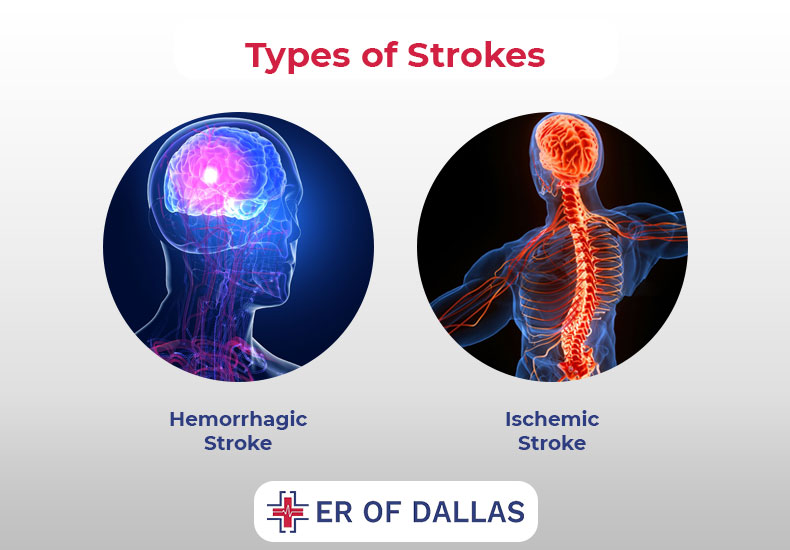
Hemorrhagic Stroke
Hemorrhagic strokes, which are pronounced “hem-or-aj-ick,” result in bleeding inside or around the brain. One of two things can cause this to occur:
- Internal bleeding in the brain (intracerebral). This occurs when a cerebral artery bursts or ruptures, resulting in hemorrhaging that compresses the surrounding brain tissue.
- bleeding into the area between your brain’s outer coating and subarachnoid region. Your brain is surrounded by a thin layer of tissue called the arachnoid membrane, which has a pattern resembling a spiderweb. The subarachnoid space (abbreviated “sub” for “under”) is the area that separates it from your brain. A subarachnoid hemorrhage, or bleeding into the subarachnoid space, can result from damage to blood arteries that cross the arachnoid membrane and press against the brain matter underneath.
Ischemic Stroke
Ischemia—pronounced “iss-key-me-uh”—occurs when there is insufficient blood flow to the cells, depriving them of oxygen. Usually, something obstructs blood arteries in the brain, preventing blood flow, which is why this occurs. Approximately 80% of all strokes are ischemic strokes, which are the most prevalent type.
An ischemic stroke typically occurs due to one of the following causes:
- Thrombosis, or the formation of a clot in the brain.
- An embolism is the result of a piece of a clot that originated elsewhere in your body breaking loose entering your blood vessels and being lodged in your brain.
- Lacunar stroke, also known as small vessel blockage, is a potentially fatal condition that arises from uncontrolled hypertension, hyperlipidemia, or Type 2 diabetes.
- Reasons unknown (the term “cryptogenic” refers to “hidden origin”); these are cryptogenic strokes.
Where Can I Find Stroke Rehabilitation?
Your health insurance plan’s coverage and the troubles you’re experiencing will determine the kind of facility you recover in. Choosing the setting that best meets your needs can be assisted by a physician and a clinical social worker.
Skilled Nursing Homes
Certain assisted living facilities provide customized stroke recovery initiatives. Others can assist you in healing by providing physical, occupational, and other forms of treatment. Generally speaking, these treatment plans aren’t as rigorous as those provided at hospital rehabilitation centers.
Your Home
To aid in your recovery, you might be able to have experts visit your house. This alternative has limitations even though it might be more convenient and pleasant than receiving rehabilitation outside of your house.
Exercises requiring specialist equipment are probably out of the question for you, and your insurance company might not pay for this kind of therapy.
Rehabilitation Unit
Rehab facilities are available at certain clinics and hospitals. Some units are housed in buildings apart from a hospital or clinic. If you receive treatment at an inpatient unit, you might spend a few weeks there.
You will visit the clinic for a set amount of time every day to work on your rehabilitation if you are receiving outpatient care.
These clinics can assist with vital sign monitoring and offer various therapies to restore function that has been lost after a stroke.
A 2017 study found that the best duration and frequency of rehabilitative therapy during this time are still being researched. Early and intensive rehabilitative therapy is necessary as soon as feasible, according to most researchers.

MRI For Stroke
Magnetic fields, radiofrequency pulses, and computers are used in an MRI to show any alterations in the brain. A stroke MRI uses advanced X-ray technology and computers to create numerous images of the inside of the head, similar to a CT scan. Within an hour of the commencement of stroke symptoms, an MRI can detect any brain damage, unlike a CT scan, which takes several hours to show any obstructions in blood flow.
Because MRIs are significantly more sensitive than CT scans, they are also more accurate. They display every problem associated with a stroke as well as any other illnesses or worrisome elements in the brain. MRIs are very good at picking up on abnormalities that are too small for a CT scan to pick up on.
CT Scan For Stroke
A head CT scan generates several images of the inside of the head from different angles using computers and X-ray technology. Any anomalies in the brain, like tumors or blood clots, can be seen, both in terms of size and position. Moreover, infections may be seen, as well as regions of the brain where blood flow has stopped and the tissue is dying.
It is best to diagnose a stroke with a CT scan to determine whether it is hemorrhagic or ischemic. A stroke CT scan can identify any blood in the skull from a hemorrhage quickly, allowing for the proper management of the illness. Certain stroke treatments do not work well for hemorrhagic strokes. Thrombolytic therapy is one such instance; it is the most effective treatment for ischemic strokes and dissolves blood clots.
7 Stroke Recovery Stages
It can be an upsetting and frightening moment when a loved one has a stroke. However, it is beneficial to know what to expect during the recovery process and ways you can help keep your loved one comfortable and not delay the rehabilitation process. The Brunnstrom method, developed in the 1960s by physical therapist Signe Brunnstrom, is among the best-known accounts of stroke recovery and rehabilitation strategies. Although every stroke recovery is unique, it is challenging to pinpoint a certain time frame for recovery; yet, you may predict the phases.

Flaccidity
Flaccidity is the initial phase of stroke recovery. It happens right after a stroke. Muscles after a stroke will be weak, sluggish, or even “floppy.”
Flaccidity can be restricted to one side of the body because a stroke frequently affects one side more than the other. Many persons experience sensations in their hands or upper limbs that are more acute than in their lower limbs.
When a stroke causes damage to the brain, it results in flaccidity. The ability of the brain to instruct specific bodily parts to move has been lost. If flaccidity persists too long, you run the risk of losing a lot of strength and muscular mass.
Spasticity
The muscles start to exhibit fundamental movements in the following phase of healing. These can occasionally be abnormal and are typically a reaction to a touch-related stimulation. Relearning how to communicate with the muscles to initiate voluntary movement is still ongoing for the brain. Although involuntary movement can be concerning, it is a positive development.
For the same reasons as in stage one, passive movement is still crucial at this point. Active-assisted range of motion, which combines passive and active movement—no matter how tiny the active movement—to attain a full range of motion, can also be introduced to rehabilitation if practicable at this point.
Spasticity Increase
Spasticity rises in the third phase of stroke recovery. This can be upsetting, and you could think that your stroke recovery is stagnating and that you are becoming worse.
Though it may not seem like it, try to remember that an increase in spasticity is a good thing. Your brain is still in the process of reestablishing communication with your muscles.
You will keep up with and make progress with your therapeutic activities during this phase of your stroke rehabilitation. Though it may be difficult, your main goal will probably be to move as much as you can in an active manner.
Spasticity Decreases
The fourth stage is when spasticity begins to lessen. It’s a significant turning point in the stroke healing process.
Your voluntary movement patterns will improve as your spasticity lessens, but they will still feel jerky, twitchy, and uncoordinated.
You can still have problems releasing objects because of the residual spasticity. You could hold onto a fork, for instance, but find it difficult to let go.
Because you were unable to move voluntarily during the first three stages of stroke recovery, you will probably still be very feeble.
Return of Complex Movement
There will be fewer involuntary movements as the brain sends out more and more signals that are successful in reaching the muscles. At this point, movement repetition can help achieve difficult tasks like writing, walking, using cutlery, and swimming.
Your loved one will wish to strengthen their muscles to their pre-stoke levels at this point since they will have most of their movement returned. This can be achieved by including resistance bands or little weights in earlier rehabilitative exercises.
Disappearance of Spasms & Restoration of Coordination
The spasticity almost completely disappears in the sixth stage. You will have far greater coordination to perform intricate movement patterns if you have fever-spastic motions.
During this phase of your stroke rehabilitation, concentrate on honing your fine motor and coordination skills.
You might begin focusing on maintaining more intricate and difficult functional tasks, such as preparing meals, cooking, cleaning, engaging in hobbies, and more.
Return to Normal
At this point, the brain has completely retrained itself to function and everything previously achievable is now possible. As with your unaffected side, you may now execute intricate, synchronized, and harmonious movement patterns with your affected side as well. You have the freedom to go back to your fulfilling careers. Although reaching this stage is the main objective for patients, not all stroke survivors will do so.
We at the ER of Dallas recognize the value of rehabilitation in the aftermath of a stroke. For your loved one, getting around might be challenging, particularly in the early phases of stroke rehabilitation. This is an excellent time to consider live-in care. Our post-stroke care specialists can come to your loved one’s home regularly, step in as a full-time caregiver, or take over temporarily when you need some alone time. Please contact us so that we can assist you in selecting the best course of action for you and your loved one.
Stroke Symptoms: What Can You Expect?
The part of the brain that is affected by a stroke will determine the symptoms you experience. A stroke that affects Broca’s area, the portion of the brain that regulates the muscles in your face and mouth used for speech, is an illustration of this. This explains why some stroke victims slur their words or find it difficult to talk.

The Symptoms of stroke can involve one of them:
- Weakness or paralysis from one side
- From one side of the mouth loss of muscle control
- Loss of speaking ability and difficulty in speaking
- Personality disorders
- Nausea
- Agitation or confusion
- Stiffness of neck
- Memory loss
- Coma
- Headache
Causes of Stroke
Hemorrhagic and ischemic strokes can occur for a variety of causes. Ischemic strokes mainly occur due to blood clots. These may occur for several causes, including:
- Atherosclerosis.
- Clotting illnesses.
- Atrial fibrillation, particularly in cases where sleep apnea is the cause.
- Defects of the heart (ventricular or atrial septal defects).
- Microvascular ischemia is a condition where your brain’s tiny blood capillaries become blocked.
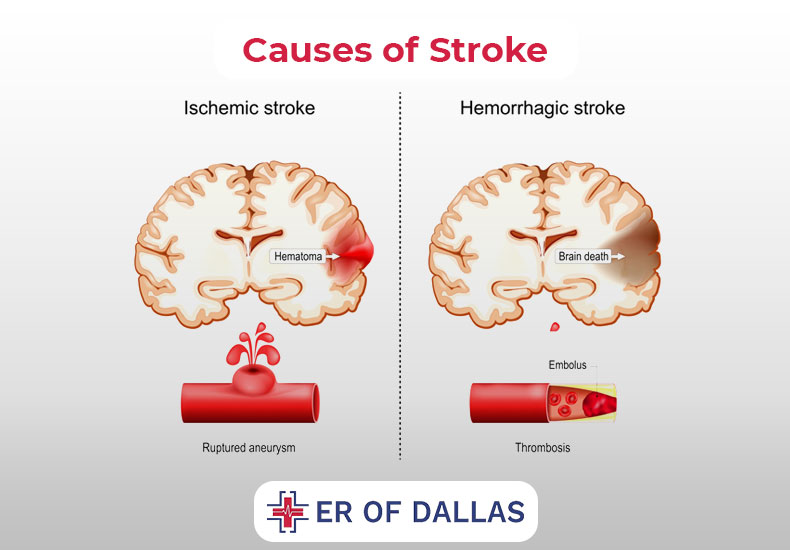
Hemorrhagic strokes can also occur for several reasons, such as:
- Tumors of the brain (including cancer).
- High blood pressure, particularly if it’s extremely high, persistent, or both.
- Hemorrhagic strokes can occasionally result from brain aneurysms.
- Illnesses like moyamoya disease weaken or cause strange changes in the blood vessels in your brain.
How Is Stroke Diagnosed?
A neurological examination, diagnostic imaging, and other procedures can be used by a healthcare professional to diagnose a stroke. A neurological examination provider may ask you to complete tasks or provide answers. The provider will be on the lookout for any telltale indicators that point to a malfunction in how a particular section of your brain functions while you complete these tasks or respond to these questions.
When a medical professional suspects a stroke, the most typical tests that take place are:
- CT scan (computerized tomography).
- Scans using magnetic resonance imaging (MRI).
- Laboratory blood tests (monitoring blood sugar levels, clotting capacity, kidney and liver function, and other symptoms of infection or heart damage).
- An electrocardiogram, often known as an ECG or EKG, is to rule out a cardiac condition as the cause of the issue.
- Even though it is less common, an electroencephalogram (EEG) can rule out seizures or other related issues.
What Is Treatment for Stroke?
The way a stroke is treated is influenced by numerous variables. The type of stroke a patient has is the most significant factor in determining their course of treatment.
- Ischemic: Restoring blood flow to the damaged brain regions is the main goal in cases of ischemic strokes. Sometimes, if this occurs quickly enough, irreparable damage can be avoided, or at least the severity of a stroke can be reduced. To restore circulation, thrombolytic medications are typically used, though catheterization may also be necessary.
- Hemorrhagic: The location and extent of the bleeding determine the course of treatment for hemorrhagic strokes. Since lowering blood pressure will lessen bleeding and prevent it from getting worse, this is frequently the first focus. Enhancing coagulation is an additional therapeutic strategy to halt the bleeding. Sometimes accumulated blood pressure on the brain requires surgery to release the pressure.
What Medications Are Used?
Depending on the type of stroke and the patient’s timing of therapy, different drugs and therapies are employed. Long-term stroke treatments are also available. These occur in the days and months following emergency care for the immediate risk of stroke.
In general, the best person to advise you on the course of treatment or courses of action is your healthcare professional. They can customize the data they offer to your particular situation, taking into account things like your personal circumstances, medical history, and more.
Stroke can be treated in several ways, including:
Thrombectomy Performed Mechanically
Mechanical thrombectomy is a catheterization method that can be used in certain situations, particularly when thrombolytic medicines are not an option. Thrombectomy procedures are also time-sensitive, and the ideal window for these treatments is within 24 hours after symptoms start. A catheter, or tube-like device, is inserted into a large blood vessel and guided up to the brain clot during this surgery. Once there, a device that can remove the clot is attached to the tip of the catheter.
Control of Blood Pressure
Lowering blood pressure is an essential component of treating hemorrhagic strokes because it is typically the cause of these events. Blood vessel injury can be sealed more easily by clotting when blood pressure is reduced.
Thrombolytic Medications
Within the first three hours following the onset of stroke symptoms, thrombolytic medications (whose name is derived from the Greek words “thrombus,” which means “clot,” and “lysis,” which means “loosening/dissolving”) may be a possibility. These drugs break apart blood clots that already exist. However, they are only a viable option within that three to four-and-a-half-hour window, as they raise the possibility of hazardous bleeding issues beyond that point.
Clotting Assistance
Hemostasis is a process that your body uses to stop bleeding and heal wounds so that your clotting capacity can function. To support hemostasis, drugs or blood components that facilitate coagulation are infused. Infusions of prothrombin or clotting factor, vitamin K therapy, and other treatments are examples. This treatment can help stop bleeding and is most commonly used for hemorrhagic strokes (particularly in patients on blood thinners).
Brain Exercises for Stroke Patients
People with strokes can regain reasoning, memory, and thinking skills by engaging in brain exercises. In addition to eating a heart-healthy diet and exercising regularly, limiting alcohol consumption is also a brain-strengthening activity.
Some people may struggle with thinking, reasoning, consciousness, and memory following a stroke. This is not unusual. A stroke results in the cessation of blood flow to the brain, which can cause damage or even death to brain cells. This can alter a person’s manner of thinking, feeling, moving, and communicating.
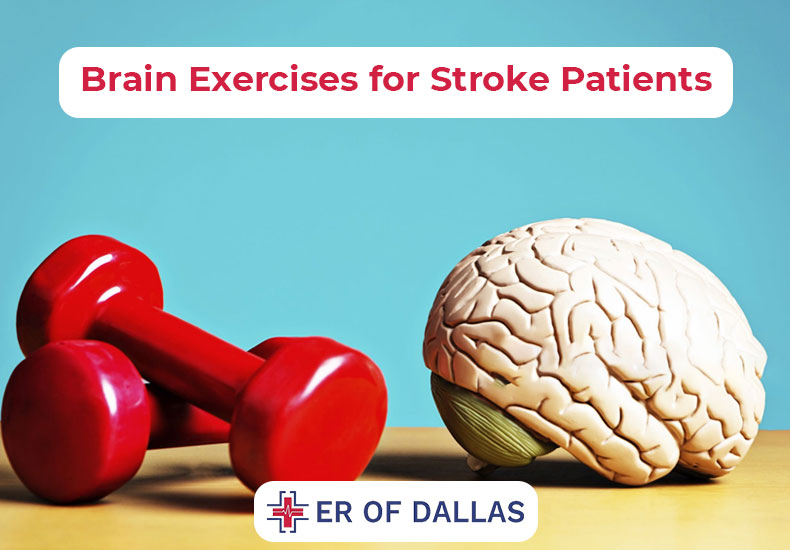
Games That Test Your Memory
Other board games besides Monopoly can help people recover from strokes. Memory and concentration are required for memory games like Tap It and Simon. In these games, players are given a brief sequence to follow, which gets longer with each successful round.
Bop It is one of the memory games that requires physical responses as well. In particular, Bop It requires you to manipulate certain sections of the handheld device. Despite its difficulties for some people with impaired motor skills, it can help others regain strength after a stroke.
Games That Require Strategy
Some board games and computer games require critical thinking skills and strategic skills to play and be successful. Popular games like Ticket to Ride and Catan, as well as more traditional ones like Mahjongg and Yahtzee, demand you to plan and make strategic movements to win.
Craft and Art
Healthcare providers can assist patients in recovering from a range of illnesses by using art therapy. People who may find it difficult to communicate their emotions can get relief from stress and manage their feelings through art therapy.
However, the cognitive and motor abilities involved in sketching, coloring, painting or crafts go beyond the therapeutic benefits of art. Additionally, prolonged use of art supplies or equipment helps strengthen and increase stamina in the muscles.
Discovering New Hobbies
While learning new material, vocabulary, and skills may seem like the last thing you want to do after a stroke, it’s just that challenge that helps stroke survivors heal so much faster. Finding a new interest or talent requires memory and communication abilities.
For these skills, you might also need to utilize your hands, arms, or even your legs. This can aid in maintaining muscular strength and regaining some motor skill functions. Think about hobbies like gardening, scrapbooking, studying sign language, or even bird watching.
Identifying Sequences
To identify and create your strategy games, you don’t need any specialized board games or computer software. Give your mind puzzles by completing tasks such as:
- Alphabetizing sentences
- Classifying clothes according to color or size
- Arranging your family members according to their birthdays
- Sorting books based on size and, putting vitamins or medications in a pill organizer
Calculating Money
Take out your purse or nightstand, get the loose change, and count, sort by coin type, or return the change. Mathematical reasoning and short-term memory are required for these tasks.
Game Based on Visual Processing
Comparing visuals that differ slightly from one another is an excellent way for stroke survivors to exercise their brains. You must compare and contrast the photos in these tasks to spot little changes. This can improve your focus and ability to interpret spatial information.
Board Games
After a stroke, engaging in your favorite childhood activity can benefit your brain function. Traditional board games like Connect 4, Qwirkle, Battleship, and Guess Who? need a variety of mental abilities, including memory, focus, organization, and logic.
Even better, the majority of these activities call for a partner or partners, and the additional time spent interacting with friends and family can help a stroke victim recover even more.
FAQs
What is The Average Hospital Stay for Stroke Patients
After a stroke, a patient typically stays in the hospital for five to seven days. The rehabilitation strategy will be decided upon by the stroke care team after they have assessed the stroke’s effects.
Why Do Stroke Patients Sleep So Much
This is because the brain needs more energy to repair the damage it has sustained, which leaves less energy for regular tasks like remaining awake. Moreover, research has demonstrated that sleep enhances neuroplasticity following a stroke.
How Much Vitamin b12 Is Important For Stroke Patients
Not only may vitamin B12 help stroke sufferers regain their cognitive function, but it is also essential for maintaining the health of the brain and nerves. Although most animal products naturally contain B12, pills are an excellent source as well.
Conclusion
A stroke is a serious, potentially fatal medical emergency since it is the brain’s equivalent of a heart attack. Strokes also happen quickly, and waiting too long to receive treatment can result in death or irreversible brain damage. For the person having the stroke or others around them, it can be scary.
However, new drugs, technical advancements in imaging, and our growing understanding of the brain are making stroke therapy choices more and more accessible daily. It’s crucial to get medical help right away if you or someone you’re with exhibits stroke symptoms. The likelihood that a stroke victim’s consequences will be mitigated or even reversed increases with the speed at which they receive medical attention.
If you are facing any symptoms related to stroke, then visit ER of Dallas – Emergency Room straight away.

